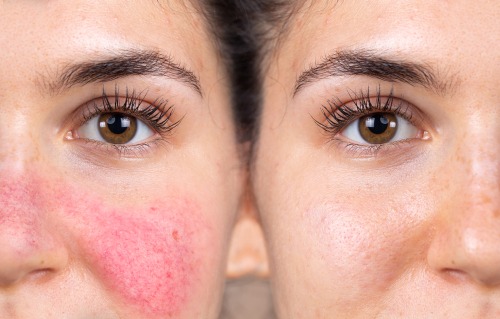Rosacea is a chronic skin condition that affects more than 14 million people in the United States. It requires specialized care to prevent progression and manage symptoms effectively. Understanding when to consult a dermatologist can significantly impact treatment outcomes and overall quality of life. Professional dermatological care provides access to prescription treatments, accurate diagnosis, and personalized management plans.
What Is a Dermatologist?
A dermatologist is a medical doctor who specializes in diagnosing and treating conditions affecting the skin, hair, and nails. Their extensive training covers medical, surgical, and cosmetic dermatology procedures. Dermatologists understand the complex mechanisms underlying chronic inflammatory conditions, such as rosacea. This expertise allows them to differentiate between similar-looking skin conditions and provide targeted treatment approaches.
What Is Rosacea?
Rosacea is a chronic inflammatory skin condition that primarily affects the central face, including the cheeks, nose, chin, and forehead. The condition typically develops in adults over age 30 and tends to worsen without proper treatment. Four main subtypes exist: erythematotelangiectatic, papulopustular, phymatous, and ocular rosacea.
The condition manifests differently in each individual, making professional diagnosis valuable for proper classification. Some people experience mild facial redness, while others develop persistent bumps, visible blood vessels, or eye involvement. Understanding your specific subtype helps guide treatment selection and management strategies.
What Causes It?
The exact cause of rosacea remains unknown, but several factors may contribute to its development. Abnormal blood vessel function, inflammatory responses, and microscopic skin mites, such as Demodex folliculorum, may all play a role. Genetic predisposition potentially influences susceptibility to developing the condition.
Environmental and lifestyle triggers can exacerbate symptoms in susceptible individuals. Triggers include sun exposure, hot beverages, spicy foods, alcohol, and extreme temperatures. Individual trigger patterns vary, making personalized identification and avoidance strategies beneficial for management.
What Are the Symptoms?
Symptoms vary depending on the subtype but commonly include persistent facial redness, particularly across the cheeks and nose. Individuals may experience burning or stinging sensations in affected areas. Small, red bumps resembling acne may develop, though blackheads are typically absent in rosacea. Additional symptoms include visible blood vessels, skin thickening, and eye irritation.
How Is Seeing a Specialist Beneficial?
Dermatologists can accurately diagnose rosacea and distinguish it from similar conditions, such as acne, seborrheic dermatitis, or lupus. Misdiagnosis often leads to inappropriate treatments that may worsen symptoms. A professional evaluation includes a thorough medical history and physical examination to identify your specific subtype and potential triggers.
Specialists have access to prescription treatments not available over-the-counter, including topical antibiotics, oral medications, and laser therapies. Dermatologists also provide comprehensive management plans that go beyond medication. They help identify personal triggers, recommend appropriate skincare products, and monitor treatment progress. Regular follow-up appointments enable adjustments to your treatment based on your response and any changes in symptoms.
See a Dermatologist Today
Rosacea requires professional medical management to prevent progression and maintain symptom control. While the condition cannot be cured, appropriate treatment can reduce symptoms and improve quality of life. If you experience persistent facial redness, burning sensations, or bumps that resemble acne, schedule a dermatology consultation. A professional evaluation can provide valuable information about your condition and help you access effective treatment options.

